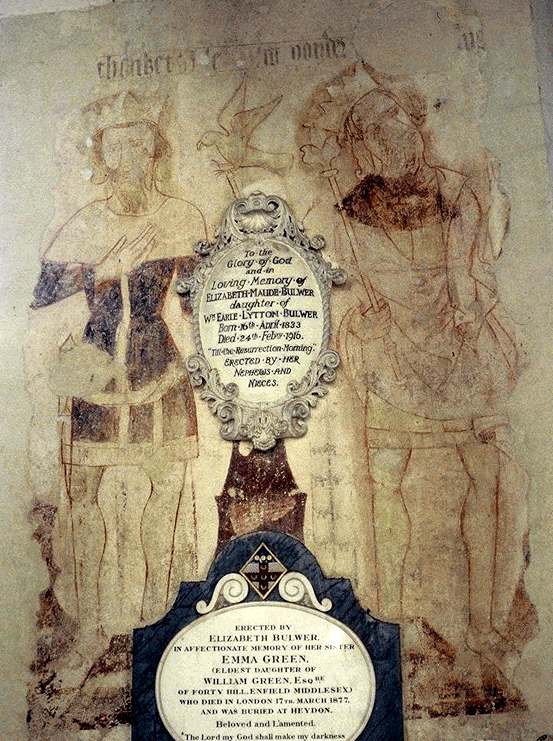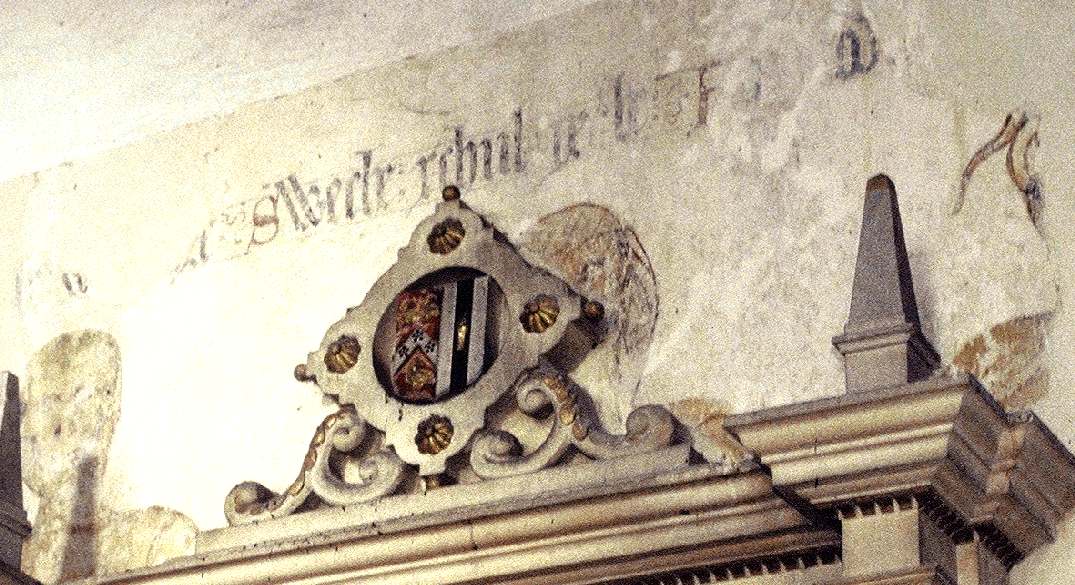Heydon, Norfolk (†Norwich) C.15
The Three Living & The Three Dead

At the left are the remaining two Living, both evidently kings, the right-hand one with a sceptre. They have almost certainly seen the three Dead, and their response, not really readable now, is in the inscription above their heads. Between the two figures a hawk perches, perhaps held by the king on the left or perhaps perching on what might once have been a tree stump in dark red pigment in the centre. The painting, quite an accomplished example, was, like the others at Heydon, discovered only in 1970. The long cloak of the king on the right is lined with just discernible vair – squirrel fur, appearing here as greyish horizontal lines. This detail is also present in the Adoration of the Magi at Heydon, where it is easier to see.
Below at the right are the remains of what the kings have seen, three faint heads and an inscription, the rest of the figures sadly obscured by another memorial tablet.
What is left of the head furthest right has something protruding from it at the left; it is probably a corner of the figure’s shroud, knotted on top of the head in contemporary fashion. Here, some of the inscription above is readable; the central part, just above the diamond-shaped coat of arms at the top of the memorial, reads “Sweche schal ye be…”. Further right comes a new sentence beginning with an upper-case Gothic F. My reading is “For God’s [love be warned by me]”, which corresponds to the inscription in the Arundel Psalter discussed on the page for Wensley.

The discovery of the paintings at Heydon is encouraging proof that even now, medieval church painting may be discovered and revealed. And the chosen subjects in the church are of great interest Herod’s Feast, with the Decollation of John the Baptist and Salome’s dance, is rare, and on these pages now, as is the Adoration of the Magi and there is also an unidentified crowned woman who may be the Virgin or a female saint. From a medievalist’s point of view, the ample memorialising indulged in later by the Bulwer-Lytton family and their ancestors the Earles is obviously to be regretted, even if it does present us with a nice vein of irony.
† in page heading = Diocese